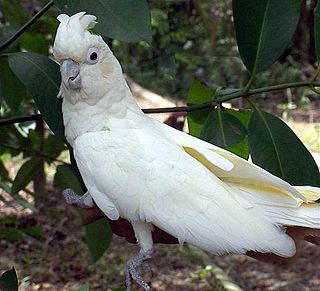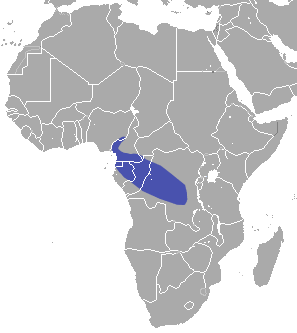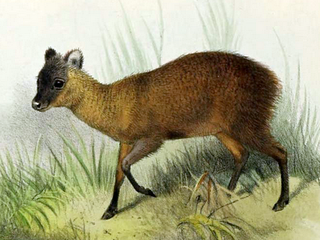
The macaques constitute a genus (Macaca) of gregarious Old World monkeys of the subfamily Cercopithecinae. The 23 species of macaques inhabit ranges throughout Asia, North Africa, and Europe. Macaques are principally frugivorous, although their diet also includes seeds, leaves, flowers, and tree bark. Some species such as the long-tailed macaque will supplement their diets with small amounts of meat from shellfish, insects, and small mammals. On average, a southern pig-tailed macaque in Malaysia eats about 70 large rats each year. All macaque social groups are arranged around dominant matriarchs.

Lauraceae, or the laurels, is a plant family that includes the true laurel and its closest relatives. This family comprises about 2850 known species in about 45 genera worldwide. They are dicotyledons, and occur mainly in warm temperate and tropical regions, especially Southeast Asia and South America. Many are aromatic evergreen trees or shrubs, but some, such as Sassafras, are deciduous, or include both deciduous and evergreen trees and shrubs, especially in tropical and temperate climates. The genus Cassytha is unique in the Lauraceae in that its members are parasitic vines. Most laurels are highly poisonous.

The red-vented cockatoo, also known as the Philippine cockatoo and locally katala, abukay, agay or kalangay, is a species of cockatoo. It is endemic to the Philippines. Though pressured by environmental degradation and illegal pet trades, the population of the Philippine cockatoo is somehow growing owing to the Katala Organization. It is roughly the size and shape of the Tanimbar corella, but is easily distinguished by the red feathers around the vent. It is threatened by habitat loss and the cage-bird trade.

Morelia is a genus of large snakes in the family Pythonidae found in Indonesia, New Guinea, and throughout Australia. Currently, up to eight species are recognized.

Aders's duiker, also known as nunga in Swahili, kunga marara in Kipokomo and harake in Giriama, is a small, forest-dwelling duiker found only in Zanzibar and Kenya. It may be a subspecies of the red, Harvey's, or Peters's duiker or a hybrid of a combination of these. It is named after W. Mansfield Aders, a zoologist with the Zanzibar Government Service.

The conservation status of a group of organisms indicates whether the group still exists and how likely the group is to become extinct in the near future. Many factors are taken into account when assessing conservation status: not simply the number of individuals remaining, but the overall increase or decrease in the population over time, breeding success rates, and known threats. Various systems of conservation status are in use at international, multi-country, national and local levels, as well as for consumer use such as sustainable seafood advisory lists and certification. The two international systems are by the International Union for Conservation of Nature (IUCN) and The Convention on International Trade in Endangered Species of Wild Fauna and Flora (CITES).

The Telefomin cuscus is a critically endangered possum found on New Guinea.

A genet is a member of the genus Genetta, which consists of 17 species of small African carnivorans. The common genet is the only genet present in Europe and occurs in the Iberian Peninsula, Italy and France.

A species that is extinct in the wild (EW) is one that has been categorized by the International Union for Conservation of Nature as only consisting of living members kept in captivity or as a naturalized population outside its historic range. Classification requires exhaustive surveys conducted within the species' known habitat with consideration given to seasonality, time of day, and life cycle. Once a species is classified as EW, the only way for it to be downgraded is through reintroduction.
The Sichuan partridge is a bird species in the family Phasianidae. It is found only in China where it is classified as a nationally protected animal. Its natural habitat is temperate forest. It is threatened by habitat loss.

The cloven-feathered dove is a species of bird in the family Columbidae. It is monotypic within the genus Drepanoptila, but this genus is possibly better merged into Ptilinopus. The cloven-feathered dove is endemic to New Caledonia where found in forest and Melaleuca savanna at altitudes up to 1,000 m (3,300 ft).
The Iphis monarch, or Ua Huka flycatcher, is a species of bird in the family Monarchidae. It is endemic to French Polynesia. Its natural habitats are subtropical or tropical dry forests, subtropical or tropical moist lowland forests, subtropical or tropical moist shrubland, and plantations.

The greater forest shrew is a species of mammal in the family Soricidae found in Cameroon, the Central African Republic, the Republic of the Congo, Equatorial Guinea, Gabon, and Nigeria. Its natural habitat is subtropical or tropical moist lowland forest.

The northern pudu is a species of South American deer native to the Andes of Colombia, Venezuela, Peru and Ecuador. It is the world's smallest deer and is classified as Data Deficient in the IUCN Red List.
Ficus lapathifolia is a species of plant in the family Moraceae. It is endemic to Mexico.
Spathacanthus is a genus of plants in the family Acanthaceae. It contains the following species :

Virola surinamensis, known commonly as baboonwood, ucuuba, ucuhuba and chalviande, is a species of flowering plant in the family Myristicaceae. It is found in Brazil, Costa Rica, Ecuador, French Guiana, Guyana, Panama, Peru, Suriname, and Venezuela. It has also been naturalized in the Caribbean. Its natural habitats are subtropical or tropical moist lowland forests, subtropical or tropical swamps, and heavily degraded former forest. Although the species is listed as threatened due to habitat loss by the IUCN, it is a common tree species found throughout Central and South America.

The Kauaʻi nukupuʻu was a species of nukupuʻu once found throughout parts of the Hawaiian island of Kauaʻi. It was an insect eater that picked out its tiny prey from tree bark. The males were yellowish with brown wings, while the females were grayish brown with a yellow throat streak.

Jouvenet's shrew is a species of mammal in the family Soricidae. It is found in Côte d'Ivoire, Guinea, Liberia, and Sierra Leone. This species is present in lowland tropical moist forest and possibly in montane forest.














